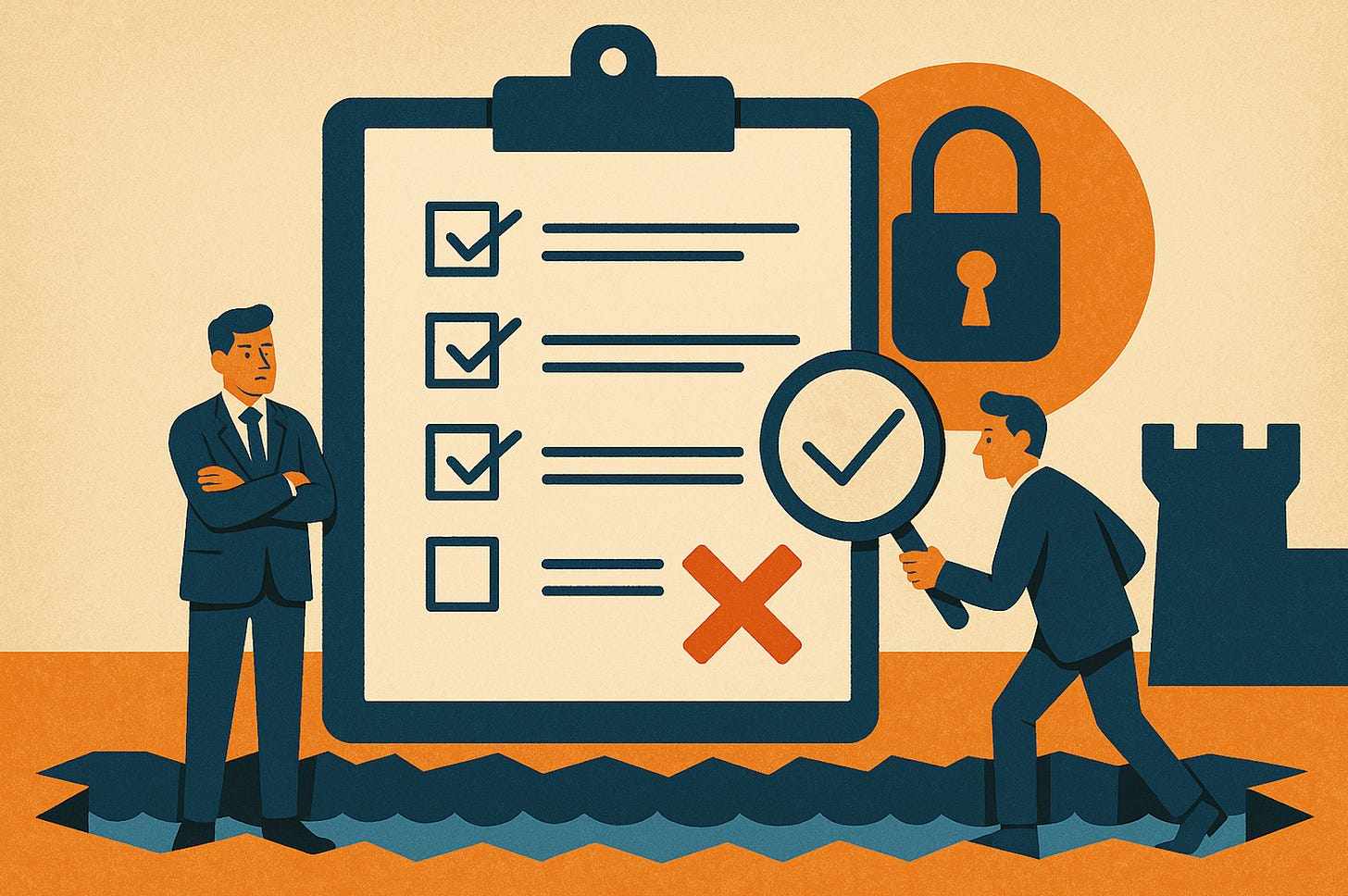TVM #6: Security Questionnaires Do Not Prove Trust
Part of the Trust Value Reset series
TVM #1: Trust Defines Market Leadership
TVM #2: Compliance Alone Does Not Create Trust
TVM #4: Trust is a Measurable, Managed, and Monetized Asset
TVM #5: The Chief Trust Officer is Inevitable
TVM #6: Security Questionnaires Do Not Prove Trust
TVM #7: Building an Enduring Trust Moat
TVM #8: The Strategic Future of TrustNo deal has ever closed because a vendor checked “Yes” on a security questionnaire. And yet, trust due diligence continues to rely on static, self-reported questionnaires: documents that don’t prove trust but instead create trust friction, trigger additional scrutiny, and slow business. These forms were designed for an era when compliance was the primary proxy for trust. That era is over. Security questionnaires aren’t disappearing. But they are no longer the instrument that determines trust. In a trust-first model, security questionnaires become secondary, a formality rather than the primary decision-making tool. Just as financial statements are no longer the decisive factor in credit decisions (supplanted by real-time financial risk scoring), trust artifacts, stories, and continuous trust value delivery now provide a superior, dynamic alternative to static self-reported spreadsheets. Companies that manufacture trust don’t get stuck in security questionnaires because trust has already been delivered.
Trust friction isn’t solved by security questionnaires, it’s created by them. Trust friction begins the moment a buyer hesitates. Security questionnaires don’t resolve that hesitation: they amplify it. Instead of establishing confidence, they introduce new doubts, forcing buyers into a slow, adversarial verification process. Every self-reported answer is a request for blind trust, leading to additional scrutiny, escalations, and procurement delays. The problem isn’t just that questionnaires fail to prove trust, it’s that they actively undermine it. A checked box doesn’t confirm whether a control is enforced, effective, or even relevant. A static form captures a single moment in time, while security is dynamic; what was true yesterday may not be true today. And a questionnaire doesn’t end the conversation; it extends it. Buyers don’t accept responses at face value. They challenge them, demand supporting evidence, and escalate concerns. Instead of accelerating decisions, security questionnaires introduce new cycles of doubt, slowing deals and increasing friction at every stage of the buying process.
But the failure isn’t in the questionnaire itself, it’s in how companies have come to rely on it as the primary trust instrument. Questionnaires were designed for risk documentation, not for proving trustworthiness. That’s why automation solutions have emerged to improve the process, making security questionnaires faster and more efficient. But efficiency alone doesn’t change the fundamental problem: buyers still need to verify trustworthiness, and static reports still don’t provide the continuous, real-time evidence buyers demand.
As trust becomes a structured, continuously managed product, security questionnaires will no longer be the center of the conversation. Instead, they will become secondary, a formality, much like how traditional financial statements have been augmented by real-time financial risk scoring. Trust-first organizations aren’t waiting for buyers to ask the right questions; they are proactively delivering structured trust stories and real-time attestation mechanisms that eliminate the need for exhaustive, reactive due diligence. When trust is unstructured, buyers default to skepticism. Questionnaires become less about validating security and more about exposing gaps. Instead of accelerating decisions, they extend them. Instead of reducing friction, they create it. Instead of proving trustworthiness, they manufacture doubt. The companies that win will be the ones that shift from reactive compliance to continuous trust delivery, proactively eliminating trust friction before it ever enters the deal cycle.
The alternative to security questionnaires isn’t a better questionnaire, it’s a structured, continuously delivered trust system. Companies that manufacture trust as a product don’t wait for buyers to ask the right questions. They deliver proof before doubt can form. They replace reactive, self-reported claims with live, structured, and validated trust stories, matched by evidence that speaks for itself. Enterprise buyers aren’t looking for checkboxes. They need verifiable proof that a vendor is safe, reliable, and predictable. The Trust Product Strategy structures trust into three continuously delivered outputs:
Continuously Delivered Trust Stories: Stakeholder-specific trust narratives, pre-validated and designed to eliminate ambiguity before it ever slows a deal.
Continuous TrustNPS™ Measurements: Real-time trust telemetry, measuring actual stakeholder confidence rather than compliance checklists.
Trust Quality Outputs: Always-on pipelines ensuring trust artifacts are structured, consumable, and instantly available without friction, without delays.
This isn’t about process efficiency. It’s about value acceleration. Companies that implement Evidence Operations don’t get interrogated, they eliminate hesitation. They don’t wait for procurement to escalate concerns, they prevent them. They don’t let trust friction slow deals, they remove it entirely. The future of trust isn’t a document. It isn’t a form. It isn’t a checkbox.
It’s a product. And the companies that manufacture it will win.

